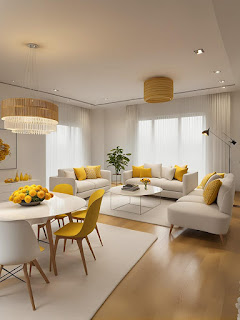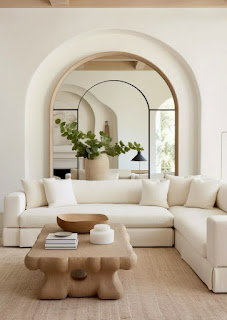Roll of furniture
The Role of Furniture in Interior Design: More Than Just Function
When we think of interior design, our minds often drift to color palettes, lighting, or wall decor. But at the heart of any well-designed space is one element that ties it all together—furniture. It’s not just about filling a room; furniture defines how a space functions, feels, and flows.
1. Function Meets Form
Furniture is, first and foremost, functional. A sofa is meant to be sat on. A dining table brings people together. But in interior design, function doesn't stand alone—form matters just as much. The best pieces combine usability with visual appeal, elevating a room’s aesthetic while serving its intended purpose.
Pro Tip:
When choosing furniture, always consider your lifestyle. Do you entertain often? Opt for modular seating. Have kids or pets? Go for durable, easy-to-clean materials.
2. Setting the Tone of a Room
Furniture sets the mood. A plush velvet armchair evokes luxury and warmth, while sleek metal bar stools add a modern, industrial edge. Each piece you bring into a space contributes to the overall narrative. In this way, furniture acts like a character in your home’s story—quietly communicating your taste, values, and personality.
Popular Styles:
Mid-Century Modern – Clean lines, organic shapes, tapered legs.
Scandinavian – Minimalist, functional, and natural wood tones.
Bohemian – Eclectic, layered textures, vibrant colors.
Contemporary – Sleek, open, and uncluttered.
3. Creating Balance and Flow
The placement of furniture dictates how we move through a room. Too much, and the space feels cramped. Too little, and it feels bare or disconnected. Great interior design is about achieving balance—visually and spatially.
Layout Tips:
Use rugs to anchor furniture groupings.
Leave at least 18 inches between seating and a coffee table.
Avoid blocking natural walkways or doorways.
Incorporate different heights for visual interest—mix low sofas with taller bookshelves or floor lamps.
4. Making a Statement
Sometimes, a single piece of furniture can become the focal point of an entire room. A bold, oversized headboard. A vintage credenza. A sculptural coffee table. These items act as statement pieces, adding drama or surprise in an otherwise subtle space.
Tip:
Let one or two pieces take center stage. Complement them with more understated furnishings to avoid visual chaos.
5. Sustainability in Furniture Choices
In today’s design world, there’s growing awareness around eco-conscious furniture. More homeowners are investing in quality; timeless pieces made from sustainable materials rather than fast-furniture that won’t last.
Look for:
FSC-certified wood
Reclaimed or recycled materials
Locally made pieces
Vintage or upcycled finds
Final Thoughts
Furniture is more than décor—it’s the backbone of interior design. It grounds a space, supports everyday life, and reflects your unique style. Whether you're furnishing a new home or refreshing a single room, take time to consider each piece carefully. Thoughtful furniture choices don’t just make a space look beautiful—they make it feel like
💌 Want to book a session or ask a question?
📧 Email:rkadmala@gmail.com
📞 Call/WhatsApp: 0796109572




so, styling the house is all about furniture
ReplyDeleteglamarous
ReplyDeletecomfort
ReplyDelete